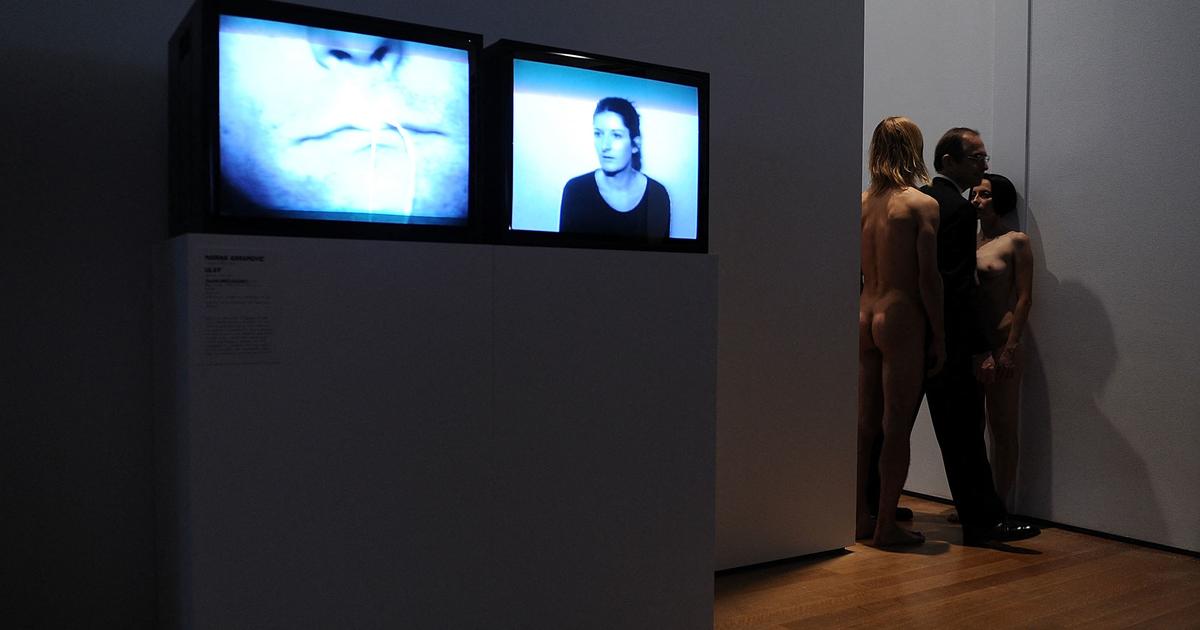He could have painted a moralizing nude, revealing and criticizing how women become an object of their desire.
He could have charged up against those paintings that fueled male ardors, one in which the woman was not ready to wear and tear.
But Aurelia Navarro (1882-1968) did not.
The Granada-born painter dared to participate at the age of 26 in the great National Exhibition of 1908, with the intention of taking it away from the painters in her own home and with her own speech: she presented a version of
Venus in the mirror
by Velázquez.
For the first time a woman did not star in the nude, she painted it.
The critics regretted that the jury, chaired by Joaquín Sorolla, had awarded Navarro the third medal of the contest.
He deserved the second, they said.
The talent that all of them saw in that "beautiful and young" woman mattered little: success led to her disappearance in a convent.
Nude of a woman
was a risky painting, the matter was reserved for painters, who did not have to suffer the bonds of nineteenth-century decorum.
But she decided to feed the myth of woman as a Venus of male satisfaction.
The controversial canvas, included in the story of the exhibition
Guests
, at the Prado Museum, was - against all odds - applauded and the canvas was written that it invites one to reconcile "with life in what is most adorable, in youth , in human form, a vessel that contains the essence of divinity ”.
There was no place for sovereignty or independence in the ideal of women in those early years of the 20th century: more fertile than strong, more docile than autonomous.
So when the press harassed the Navarro family for interviews with the famous painter, the father insisted on the monjil outcome.
Magdalena Illán does not understand.
This professor of art history at the University of Seville is the researcher who has come closest to the figure of one of the most recognized artists in life and ignored in posterity.
And he continues to wonder how he made that radical change, how he was able to abandon all creative ambition and stifle his talent, and end up portraying in Rome, in 1933, the founder of the Adorers, the order in which he disappeared.
Although it seems incredible, in 1908 no one thought of criticizing a woman for having studied the living model.
They were forbidden, they could not approach a workshop to paint the human body.
It is not unreasonable to think that this "daughter of a renowned doctor and a lady of renowned culture" studied herself.
For Magdalena Illán, Aurelia Navarro herself is the model in the painting.
A self-portrait, albeit blurred.
“That nude was made to win, with avant-garde colors, with boldness and risk.
We still cannot know what happened to it, but we must give it back the value it deserves.
Works of art are not just an object, they are reflections of the societies in which they are created ”, adds Illán.
Historian María Dolores Jiménez-Blanco calls this story "religious fanaticism" and "provincial intransigence."
An extreme case.
A feminist struggle
The manuals of the history of art have erased her name, and the painter's family prefers to reserve in privacy the talent that the artist treasured until she takes the habit with the Adorer Mothers, in Córdoba.
Illán estimates that he painted a hundred works between 1904 and 1916, hidden until the family assumed the importance of Aurelia.
“Although they fed macho stereotypes, hers, like that of other painters, was a feminist struggle.
He was very brave when he presented “Nude of a Woman”.
He wanted to show that he could do the same thing that the artistic system valued in a man ”, says Illán.
Navarro's dramatic story is the best reflection of the misogyny that turn-of-the-century Spanish society pumped up as resistance to rising feminism.
The same thing happened in France, as evidenced
by Paul Baudry's
The Pearl and the Wave
(1862).
It is also a female nude, and hangs a few rooms beyond the temporary del Prado.
Less subtle and sophisticated than that of Aurelia Navarro, the critic Theóphile Gautier said of this painting of his friend that he had met his ideal woman, because he looks at how “naughty pubescent girls” look.
“The painting by Aurelia Navarro synthesizes that moment perfectly.
She, pressured for having done a successful and not moralizing nude, ends up shutting herself up in the convent ”, explains the curator of
Guests
, Carlos G. Navarro.
María López Fernández, who has investigated the image of women in Spanish painting, is reminded of the case of Camille Claudel (1864-1943), who ended her days locked up in a mental institution in Montdevergues (France).
“Women could only aspire to be an
angel of the home,
but when they bet on their freedom and go beyond the limits of decorum and ignore feminine issues, such as mothers with their children, they find problems, because that was not the ideal feminine that men had designed for them ”, indicates López Fernández.

/cloudfront-eu-central-1.images.arcpublishing.com/prisa/HIQYBYZCE5AV7GSN5LI4YJGGAE.jpg)






/cloudfront-eu-central-1.images.arcpublishing.com/prisa/3R5DK4T3QFGLDNNR6CM6BQU6DA.jpg)
